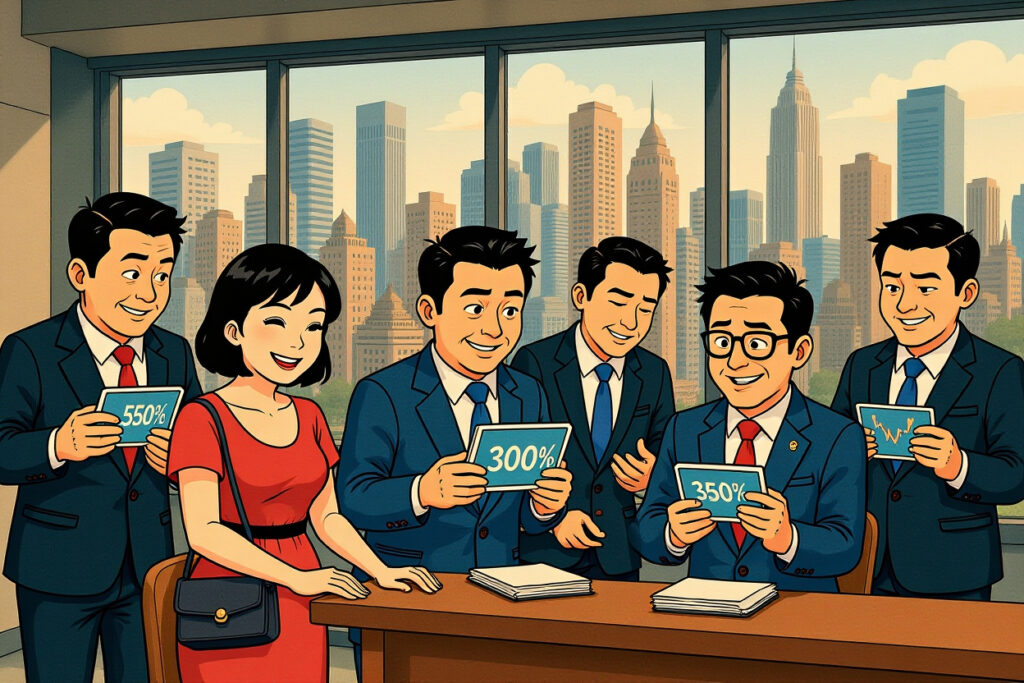Former Retail Titan Makes Bold Hydrogen Play
Huang Guangyu, the once-dominant force in China’s retail sector, has launched his most ambitious transformation yet with the establishment of Gome Hydrogen Energy Technology Co., Ltd. (北京国美氢能科技有限公司). This strategic hydrogen pivot represents Huang’s latest attempt to revive his struggling business empire amid mounting financial pressures and eight consecutive years of losses at Gome Retail Holdings Limited (国美零售).
The speed of this energy sector entry has stunned market observers. Within just five days of incorporation, Gome Hydrogen secured a strategic partnership with State Power Investment Corporation’s hydrogen subsidiary, signaling Huang’s determination to establish immediate credibility in this capital-intensive sector. This strategic hydrogen pivot comes as Huang’s retail empire faces existential threats from e-commerce competitors and crushing debt burdens exceeding 42 billion yuan.
From Retail Royalty to Energy Innovator
Huang’s dramatic career trajectory saw him rise from poverty to become China’s richest man three times between 2004-2008, only to face a 14-year prison sentence that removed him from the business world during critical years of digital transformation. His return to leadership in 2021 was met with ambitious promises to restore Gome’s market position within 18 months, but traditional retail continued its decline despite various transformation attempts.
The new venture, Gome Hydrogen, boasts broad operational scope covering hydrogen production, storage, fuel cells, and supporting infrastructure. With registered capital of 10 million yuan and 80% ownership through Huang’s Beijing Pengrun Investment Co., Ltd. (北京鹏润投资有限公司), this strategic hydrogen pivot represents both diversification and potential salvation for the beleaguered businessman.
Gome’s Accelerated Hydrogen Strategy
The timeline of Gome Hydrogen’s launch and partnership development demonstrates remarkable urgency. Incorporated on September 10, 2025, the company saw Huang appearing as chairman just two days later at the Hydrogen Green Transportation Ecosystem Construction Conference, where he articulated his vision for clean energy transformation.
By September 15, Gome Hydrogen had signed its strategic cooperation agreement with State Power Investment Hydrogen Technology Co., Ltd. (国氢科技), a subsidiary of one of China’s big five power generation groups. This rapid sequencing suggests advanced behind-the-scenes negotiations and Huang’s personal involvement in securing the partnership.
Strategic Alignment with National Priorities
Huang explicitly connected his hydrogen venture to China’s dual carbon goals (双碳目标), positioning the move as both commercially strategic and nationally aligned. Hydrogen energy development features prominently in China’s 14th Five-Year Plan for Modern Energy System, with targets for 50,000 fuel cell vehicles by 2025 and expanded hydrogen refueling infrastructure.
The partnership with State Power Investment Hydrogen Technology brings technical credibility to Gome’s venture. As the hydrogen specialized subsidiary of a central energy enterprise, State Power Investment Hydrogen Technology has developed significant capabilities in fuel cell technology and holds numerous patents in the hydrogen value chain.
Financial Pressures Driving Transformation
Gome Retail’s financial deterioration has been precipitous and persistent. From peak revenues of 76.695 billion yuan in 2016, the company reported just 474 million yuan in 2024 revenue – a decline exceeding 99%. The company has recorded eight consecutive years of net losses to shareholders, with 2024’s loss reaching 11.629 billion yuan.
First-half 2025 results showed some revenue recovery to 297 million yuan (up 75.35% year-over-year), but losses continued at 1.346 billion yuan. More alarmingly, the company’s debt situation has become critical:
– Total liabilities: 42.201 billion yuan
– Short-term borrowings: 23.358 billion yuan
– Debt-to-asset ratio: 209.23%
Multiple Gome-affiliated companies have entered bankruptcy proceedings, and Gome Electronics Limited (国美电器有限公司) alone shows 118 cases as dishonest被执行人 (dishonest被执行人), involving total amounts of 2.027 billion yuan.
Previous Transformation Attempts
Huang has pursued numerous strategic shifts since his return to leadership, all meeting limited success:
– 2023: Livestream commerce initiatives on Douyin and Kuaishou platforms failed to gain significant traction
– 2024: Instant warehouse and convenience store businesses launched but limited by capital constraints
– Late 2024: New energy vehicle sales venture announced but met with industry skepticism
This pattern of rapid strategic shifts has led some analysts to question whether the hydrogen move represents genuine transformation or desperation.
Hydrogen Market Realities and Challenges
China’s hydrogen industry remains in early development stages, characterized by high capital requirements, technological complexity, and regulatory uncertainty. While government support exists through hundreds of policies, implementation gaps and market barriers persist.
The National Development and Reform Commission (国家发展和改革委员会) and National Energy Administration (国家能源局) have outlined ambitious hydrogen development plans, but industry participants face significant hurdles:
– Electrolyzer manufacturing capacity has expanded rapidly, but renewable energy integration remains challenging due to intermittency issues
– Hydrogen transportation infrastructure is limited, with most production occurring in northwest China while demand concentrates in eastern regions
– Carbon trading markets don’t yet recognize hydrogen’s emission reduction value, limiting revenue opportunities
– Refueling station construction faces complex approval processes and regulatory barriers
With over 3,000 hydrogen-related companies already operating in China, competition is intensifying across the value chain. Gome Hydrogen enters a crowded field where technological capability and financial endurance will determine success.
Capital Intensity and Technical Requirements
Hydrogen development demands substantial investment in both R&D and infrastructure. Industry estimates suggest China’s hydrogen industry will require hundreds of billions of yuan in investment through 2030 to achieve government targets.
For Gome, the financial requirements create immediate questions about funding capacity given current constraints. The company’s ability to raise capital for hydrogen development remains uncertain, particularly given its market capitalization decline below HK$1 billion and ongoing operational losses.
Technical expertise presents another challenge. While the State Power Investment partnership provides some capability transfer, Gome lacks internal hydrogen experience and must rapidly develop or acquire technical talent in a competitive market for energy specialists.
Strategic Implications and Market Response
Huang’s strategic hydrogen pivot represents both opportunity and significant risk. Successful entry into hydrogen could provide access to growing government support and positioning in a strategic emerging industry. However, the capital requirements and technical challenges create substantial execution risk.
Market reaction to Gome’s hydrogen announcement has been cautious. The company’s share price showed limited movement following the news, reflecting investor skepticism about another transformation attempt given previous unsuccessful initiatives.
Industry analysts note several critical success factors for Gome Hydrogen:
– Ability to secure adequate financing despite parent company’s financial constraints
– Effective technology transfer and development through partnerships
– Navigation of complex regulatory environment for hydrogen infrastructure
– Creation of viable business model in emerging market with uncertain economics
Partnership Dynamics and Resource Complementarity
The State Power Investment relationship provides important validation but also creates dependency. As a state-owned enterprise, State Power Investment Hydrogen Technology brings technical capabilities and government relationships, but may have different strategic priorities than a privately-owned company like Gome.
The partnership agreement emphasizes collaboration on hydrogen application scenarios, vehicle deployment, and equipment promotion. The companies plan to leverage their respective strengths – State Power Investment’s technical capabilities and Gome’s capital operation experience and channel networks.
Their stated vision includes scaled hydrogen vehicle deployment and refueling station development during the 15th Five-Year Plan period (2026-2030), suggesting a longer-term transformation timeline than Huang’s previous 18-month recovery target.
Path Forward for Huang’s Empire
Huang Guangyu’s latest strategic hydrogen pivot represents perhaps the most dramatic transformation attempt in his career. From retail magnate to energy innovator, this shift mirrors China’s own economic transition toward advanced manufacturing and clean technology.
The success of this venture will depend on multiple factors beyond Huang’s control, including policy developments, technological advancements, and market adoption rates for hydrogen applications. However, Huang’s track record of business building and relentless determination suggest this venture will receive maximum attention and effort.
For investors and market observers, Gome Hydrogen warrants careful monitoring. The company’s ability to secure additional partnerships, raise capital, and demonstrate technical progress will provide important indicators of whether this strategic hydrogen pivot can ultimately succeed where previous transformations failed.
As China continues its energy transition and hydrogen economy development, Huang’s bold move may prove prescient or may represent another ambitious overreach. The coming months will reveal whether this strategic hydrogen pivot becomes Huang’s greatest comeback story or his final unsuccessful transformation attempt.




